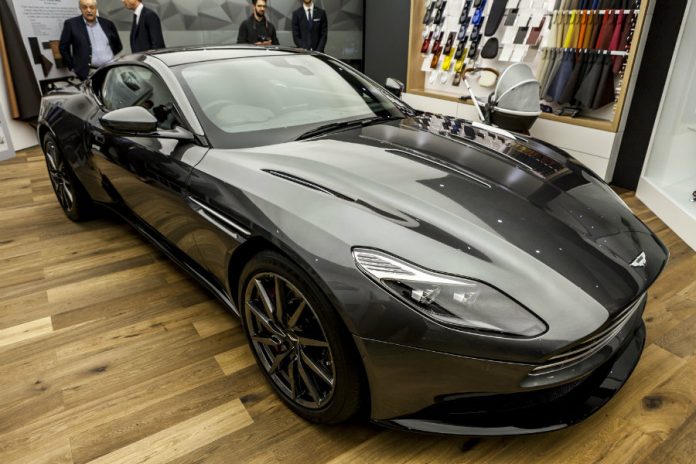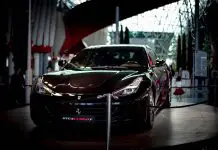
Aston Martin presents DB11, a model that impressively breaks brand’s traditional concepts. Fly off handbrake between the driver’s seat and door, classic analog gauges, key in dash ignition, all gone. Key features present from 1995 are replaced by the new edge the new luxurious model offers.
13 years ago the world was delighted with Aston Marin DB9 model. A hot, aggressive and stylish car back in 2003 with an aluminum body and curved shape that would define the brand’s look.
And 13 years is a very long time for a car model to stay in tip-top shape. DB11 comes to relieve it from its overstay welcome. A near perfect reboot of Aston Martin’s grand tourer.
The DB11
The DB11 is an all new car, front to back. 5.2-liter engine powers it, with a twin-turbocharged V-12 that can deliver up to 600 horsepower, 90 percent more than its predecessor.
It has a rear-wheel drive with an eight velocity transmission mounted in the back of the car for weight distribution purposes. It is still an automatic vehicle. It runs on Bridgestone Sm007 tires.
Twin-scroll swell defines the engine power: Peak torque can hold from 1500 to 500 revolutions per second, with a maximum output of 6500 rpm. The resulting sounds is a refined war cry with added induction noise.
The steering is electrically powered, while the suspension is a rear multilink with a 15 percent more stability than before.
DB11 is a heavy GT car, with near perfect balance, control and overall road experience, aimed primarily at touring and less the B-road hungry the DB tires had.
Engineers claim the powertrain is 25 percent more efficient than DB9’s, due to cylinder deactivation and automated stop and start.
The unique British sauce
Other brands top-end brands, like Ferraris and Lamborghinis, might be better. But there isn’t a rear-drive V12 with a dogleg manual anywhere else, let alone a car with an interior work made by hand or a painting process that takes over 50 hours. Signs of a company that has seen real revenue only twice in its 103-year history.
While Rolls-Royce and Bentley mass-produce their seats, Aston Martin spends 50 to 100 hours to build an interior out of nothing. Hand carved plastic, hides, wood, metals, glass and wood color the luxurious cockpit. Cars are not supposed to be built like this.
So, while British company modernizes a product defined by its antiquity, the DB11 still conserves the handcrafted touch of the enterprise. Still, the plan is to double the annual sales by the year 2020, as stated by the ambitious CEO Andy Palmer.
Such is the endeavor of the last relevant old-school automaker in the world, filled with the typical British endurance. A classy task for the company that gave Daniel Craig a ride in 007’s Spectre movie, with the one-off concept DB10.
Source: CNET











